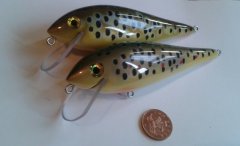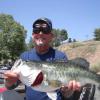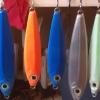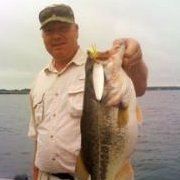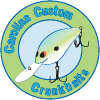Leaderboard
-
in all areas
- All areas
- Images
- Image Comments
- Image Reviews
- Albums
- Album Comments
- Album Reviews
- Topics
- Posts
- Stories
- Story Comments
- Story Reviews
- Classified Ads
- Classified Ad Comments
- Classified Ad Reviews
- Records
- Record Comments
- Record Reviews
- Websites
- Website Comments
- Website Reviews
- Status Updates
- Status Replies
-
Custom Date
-
All time
February 2 2011 - April 19 2024
-
Year
April 19 2023 - April 19 2024
-
Month
March 19 2024 - April 19 2024
-
Week
April 12 2024 - April 19 2024
-
Today
April 19 2024
-
Custom Date
02/22/2020 - 02/22/2020
-
All time
Popular Content
Showing content with the highest reputation on 02/22/2020 in all areas
-
We really need a sticky for Don'ts for newbies. Like don't put water based colors or scents in hot plastic, Don't put hot pyrex cup on cold metal plate. I think it would be helpful and maybe save an eye, or a finger, or even a life.1 point
-
Gliders, salmon are some really strong fish. I caught a 30" plus male salmon here on the CA Delta, on a wiggle wart, and he twisted the rear hook hanger 90 degrees!1 point
-
Case Plastics makes some good ones,,, Promo code "gregc20" will get you 20% off... https://fishingcompleteinc.com/collections/case-plastics/products/case-big-hellgrammite1 point
-
Absolutely! I had a recipe that mimicked Yamo perch color laminate. Had it almost perfect. Never wrote it down, and I've never been able to reproduce it. Close. but no cigar.1 point
-
I'm not a lawyer, but I doubt it's copyright infringement if you use Gulp Recharge juice. It may be different if you're selling the baits. For personal use? Who will know? I have soaked my baits, mostly senko types in Berkley juice for 2 years now in what started as an experiment. No change in texture of color. The colors included laminates as well, with no bleeding. I'm not even sure if it made a difference in fish catching either. I just use a scented worm oil now using a scent mixed with worm oil that you can buy from any supplier., mostly to keep the baits soft.1 point
-
Thank you for the advice, I kinda thought I’d revert to the dreml1 point
-
never give up. I can attest to having more then a few I have re-homed to young shoulders and backs though.1 point
-
Like Apdriver said they don't cut the end it's made via a wireforming tool such as a Hagen's or a twistech. Cut to length then bend the loop on the end and twist(wrap) to finish.1 point
-
Snips and a little grind with a dremel is how I get mine close1 point
-
These are cut to specific length, then twisted using a commercial wire tool like a Hagens. So it’s cut before the twist.1 point
-
1 point
-
1 point
-
That's good information to have. Never having done anything with balsa, I always thought you wanted the low density for maximum buoyancy.1 point
-
I also use the .051 stainless wire for most of my lures like through-wired lures, whopper ploppers and globe prop lures. For line ties and hook hangers, I typically use LPO stainless .092 magnum screw eyes. On small lures (2.5 squarebill or smaller) , I use the stainless .072 screw eyes. I no longer use thinner diameter screw eyes or brass screw eyes as I have had those break. Occasionally, I use gate hardware screw eyes on large baits (2 oz and up) especially if I can find them in stainless. I find these in the draws in small hardware stores so I can just buy the screws. They typically come in a package with one screw eye and a second screw eye with a long latch hook attached. I don't want to waste money paying for the latch I will never use. The gate hardware screws come in sizes similar to size 206, 208, 210 and 212 screw eyes but the gate screws have a longer thread. I had to pound a nail in a wall stud so I could bend .062 wire around it. I knew that size wire was not for me. I will have to try finding some .062 tig rods. On some really big baits (5+ oz), I would like to use that size wire.1 point
-
Surely if the lure has the same overall shape and volume, it will not matter what you make it it from in terms of micro baloons,wood density etc. ? At the same sink rate, the lure will weigh exactly the same regardless?1 point
-
Hey Mark,sure they would, our Atlantic salmon stop feeding long before they run our rivers. I did build a few prototypes for pike, maybe get back to them in a few months, I bought a hundred stainless props plus cups !1 point
-
I have done a couple of things on that particular blank. For a fuller skirt, attach a size 2 split ring to the lure tail hanger; attach a size 3 split ring to the size 2 ring; put the the skirt on the size 2 ring with some needle nose pliers (slide it right past the size 3 ring); after the skirt is on, hold the bait head down so the skirt falls to the nose and put your hook on the size 3 ring. The skirt sits on the size 2 ring up against the lure body and is kept on by the larger size 3 ring. For thinner skirts, I just run a tab (or a tab and half tab) of skirt material through a treble hook eye; run the material half way through and fold down; slide a small piece of shrink tubing over and just past the hook eye; shrink the tubing with a heat gun; there will be enough room on the hook eye to attach it with a split ring. Probably best to use marine shrink tubing. But. I have not had any breakage on regular shrink tubing yet. The second method gives the skirt a lot of action as it swings freely with the hook. It does give a smaller profile than the first method as the second method is limited to the number of strands you can get through the treble hook eye.1 point
-
Yep keep recipies for every bait & every color that you make because things like thickness of plastic, amount of salt if used & cnc , sandcast or stone molds will all have a different finish so you may end up tweeking your recipies to achieve the look you're after.1 point
-
Thanks for all the advise there that will help out. I have loads of old baits that i can use first there. I will deft keep the advise of having a log to write everything down also1 point
-
Strike king makes pre made skirts. That have a circular band on it. I cut the bottom band off. So it leaves outer strand. Remove hook. Place over split ring. Dab of super glue to keep in place. Replace hook. And trim skirt to your liking1 point
-
I think of Bass Jigs. Those with the weighted head and the skirt. If you look at any jig head, it'll have a hook or catch right under the head or the hook eye which acts as a catch. Then ya' simply use a tiny rubberband or maybe thread + super glue to secure the skirt to it. If you have a flat hook with no catch, it would probably be easiest to add that ledge, hook, or "catch" part. You could do that fairly easily with wire. Twist a wire super tight with a hook in the middle then cut the two ends giving you two arms stick out. Another way to add the catch part may be to use the classic pinch style lead weights you'd use on a line. Then work it around the hook trying to remove as much as possible to not affect the action of the lure too much. Maybe even solder a blob a there?1 point
-
Yes, apply the D2T with a brush. it is self leveling. Do not put on too much as it will drip. The picture below shows how I apply my epoxy and let it dry. Picture does not show applied 3d eye or epoxy. If you don't apply too much it will never run. If it does, it will run down the hook shank. The finish once it is done is just simply beautiful. If you want to see some pics, PM me your e-mail, I don't want to post pics here, as I have a business and don't want anyone to think I am advertising on here.1 point


